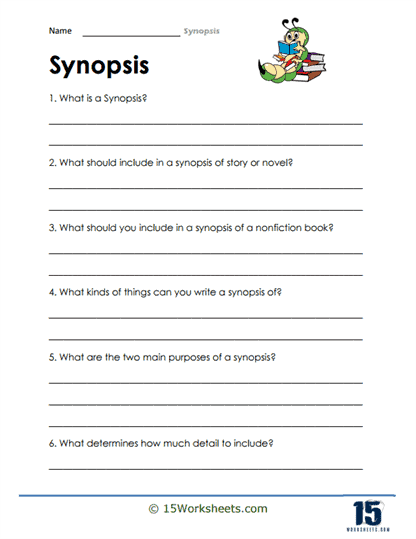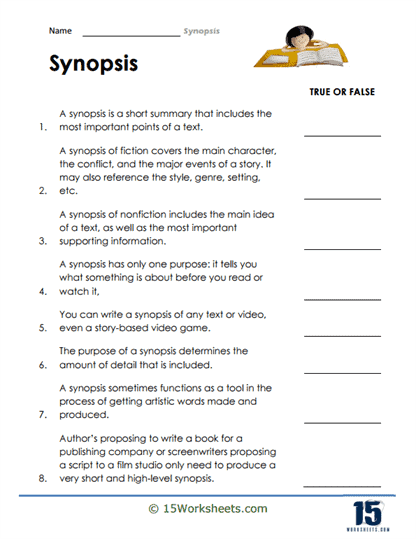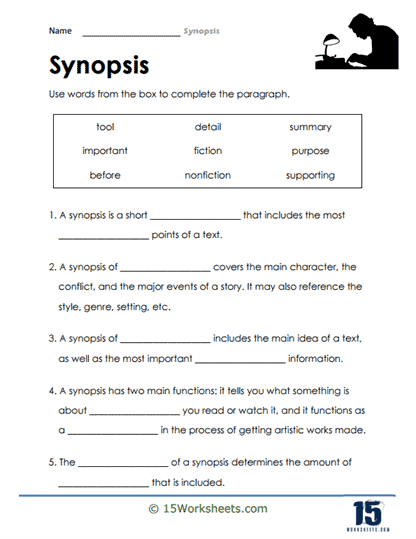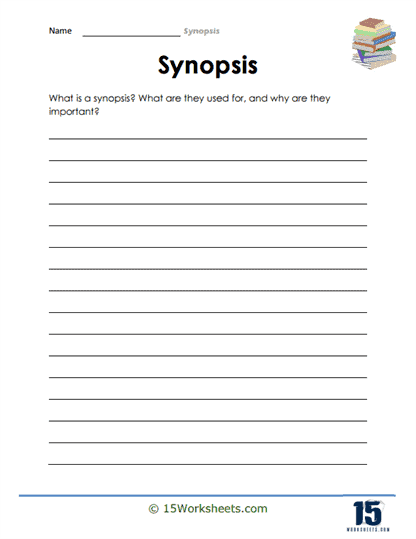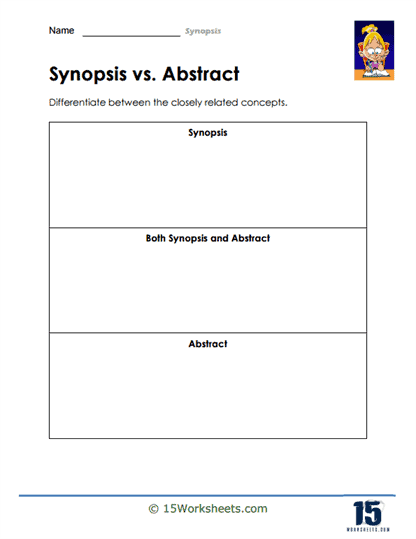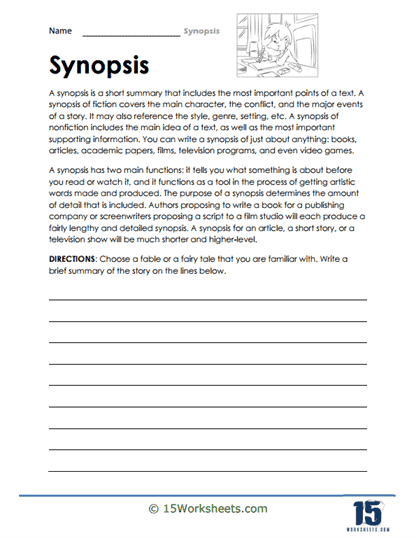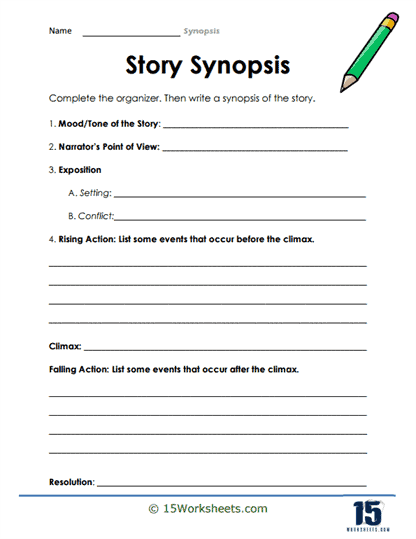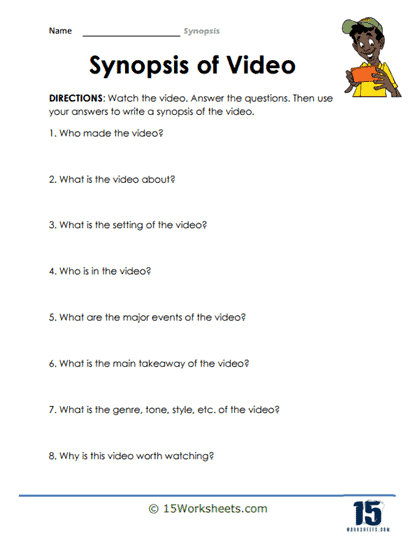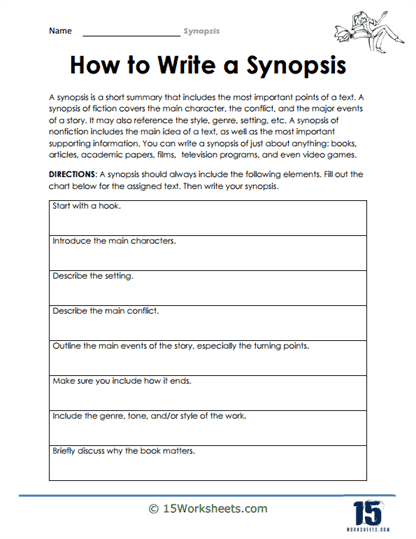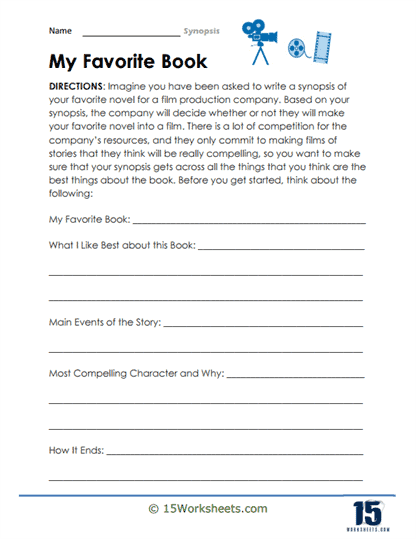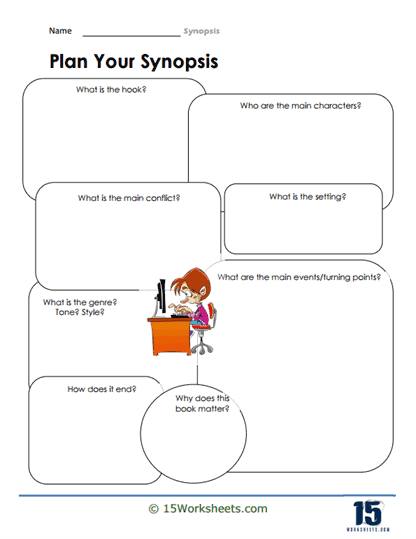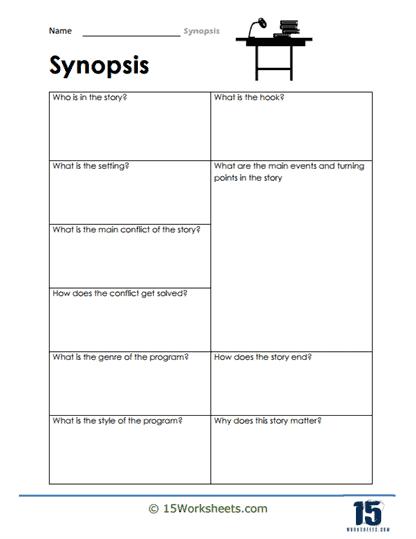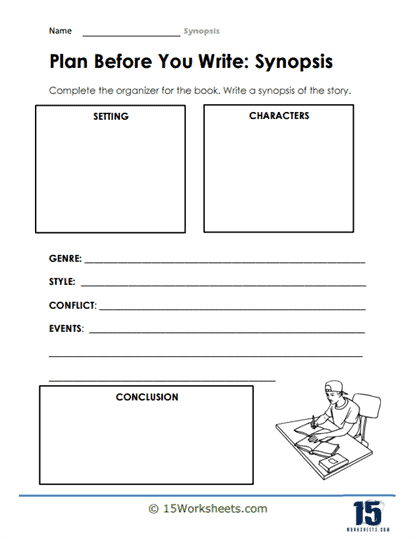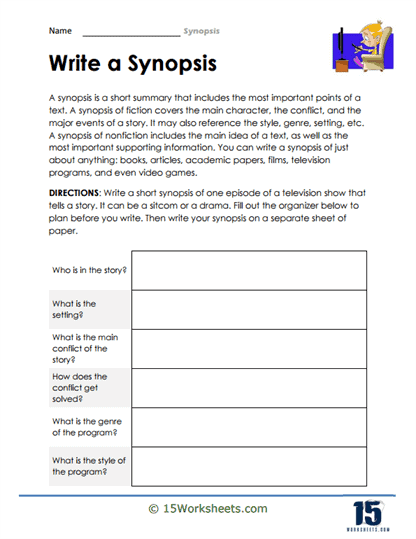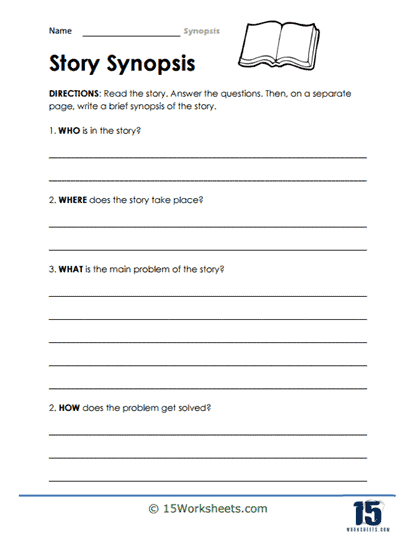Synopsis Writing Worksheets
All About These 15 Worksheets
This series of 15 worksheets offers a comprehensive and engaging resource designed to help students master the art of condensing stories into concise and compelling synopses. These meticulously crafted worksheets provide a step-by-step approach to guide students in distilling the essence of a narrative, capturing its key elements, and presenting a captivating overview.
The exercises in this series empower students to develop their summarization skills, critical thinking abilities, and effective communication techniques. Through a variety of engaging prompts, students learn to distill complex storylines, characters, and themes into succinct and enticing synopses that engage readers and capture their attention. Through these worksheets, students will:
- Explore the role of a synopsis in providing an overview of the narrative, enticing readers, and showcasing the story’s unique aspects;
- Discover techniques to convey the tone, setting, and thematic elements effectively;
- And practice using clear and concise language, crafting engaging hooks, and maintaining an appropriate narrative style.
This series equips students with the skills necessary to effectively condense stories into compelling synopses. By mastering the art of summarization, students will enhance their critical thinking, writing proficiency, and ability to communicate complex ideas concisely.
Whether used in language arts classrooms, creative writing workshops, or as part of individual study, these Synopsis Writing worksheets provide a valuable resource for aspiring writers and storytellers. In summary, students will gain confidence in their summarization skills and develop a keen understanding of how to captivate readers with succinct and enticing synopses.
What Is a Written Synopsis?
A synopsis is a kind of review that gives the reader a general idea about a piece of writing or media production. The aim is to summarize the storyline, plot, main characters, setting, etc. Synopses are usually written for books (fiction and non-fiction), movies, TV shows, academic papers, journal articles, and video games, among other things.
The level of detail can vary. It primarily depends on the purpose of a synopsis. For example, book writers must deliver a relatively longer synopsis when proposing their work to a publishing house. The same goes for a researcher looking to get their paper printed in a reputable journal or a filmmaker wanting to convince a production company to take on their project. In both these cases, a typical synopsis includes a complete plot overview, explanation of tone and theme, stages of characters’ development, etc.
There are also short synopses of various kinds. Common types include the ones you see on websites, social media pages, and other media outlets daily.
Why Are Synopses Important?
Synopses have multiple benefits. On the one hand, they play a significant role in convincing publishers and media houses to say yes to the books, movies, and TV shows proposed by various creators (authors, filmmakers, scriptwriters, producers, etc.). Synopses can help catch the audience’s attention and convince them to watch, listen, or read something.
For instance, a new crime fiction novel just came out, and there’s plenty of buzz within literary circles. However, despite being an avid reader, you’re unsure of this one. In such a scenario, going through the book’s synopsis can give you a better idea about whether spending your time (and money) on this book is worth it!
Furthermore, researchers and academicians utilize synopses to decide if a publication or paper is relevant to their field.
In a nutshell, the purpose of synopses is twofold: they help creative and research-based works (books, movies, TV shows, academic papers, etc.) see the light of day while also getting them in front of the right audience.
Following are examples of different kinds of synopsis.
Literature
People often read synopses to decide whether to read a novel or not. Here’s a short online synopsis of The Hunger Games.
In The Hunger Games by Suzanne Collins, the Capitol compels the 12 districts of Panem to pick two teenagers to compete in the televised and deadly Hunger Games. Katniss Everdeen from the 12th district takes the place of her younger sister. While fighting to stay alive and win through to the end, she is torn between feelings for Peeta Mellark, the 12th district’s other representative, and Gale Hawthorne, her hunting partner. As the story goes on, the Hunger Games are set to change Katniss’s life. However, the young woman hopes that her bravery, defiance, and kindness will change the Games too!
Television Series
Below is a part of a synopsis for the TV drama Gotham, released by the production house Warne Brothers. It introduces the main characters and talks about the plot, giving readers a “sneak peek” into what the show will be about.
Gotham is a never-told-before story of famous DC Comics vigilantes and super-villains. With Bruno Heller (of “Rome” and “The Mentalist” fame) in the writer’s and executive producer’s chair, the series chronicles the rise of an upstanding officer through the ranks of Gotham City Police Department (GCPD) and the genesis of a crime-fighting icon.
Fearless and eager to prove himself in a city where crime rules every street and corruption dominates every aspect of life, the young Detective Jim Gordon (played by Ben Mckenzie) works under the tutelage of the wise, bold, and somewhat tainted but legendary cop Harvey Bullock (played by Donal Logue). And one of their first cases together is as high profile as it can get in this city: the street shooting of billionaires and ardent philanthropists Martha and Thomas Wayne.
Tying It All Together
Synopses are handy reviews written for the benefit of publishers, media houses, and potential audience/readers. They give people a better idea of whether a piece of work is worth their time, effort, and money.

